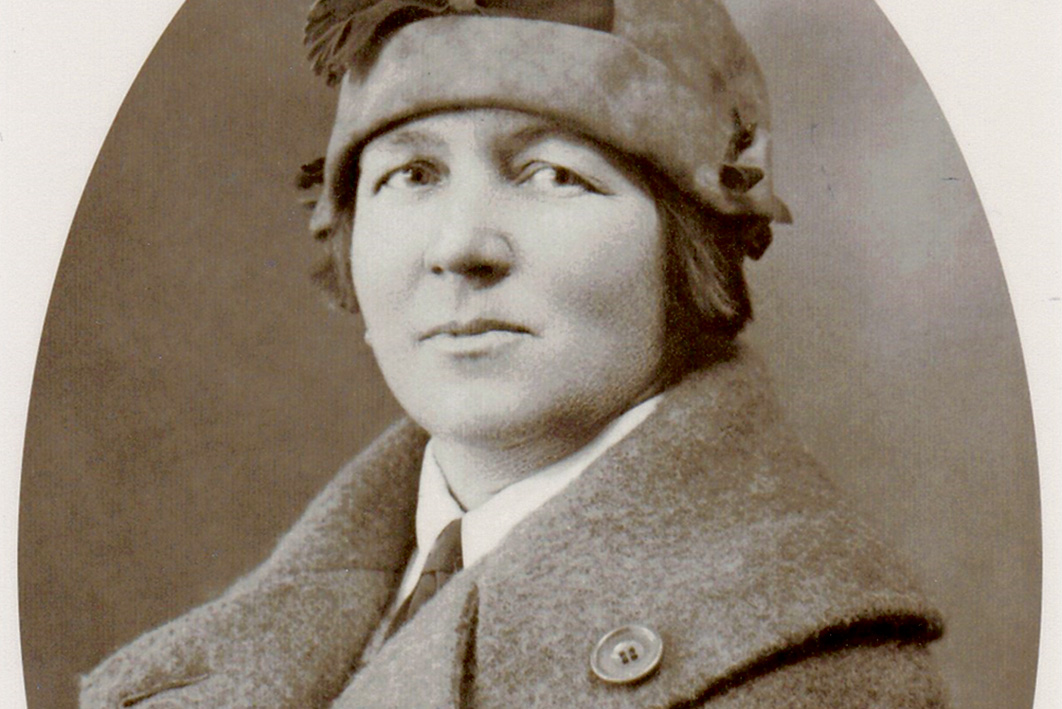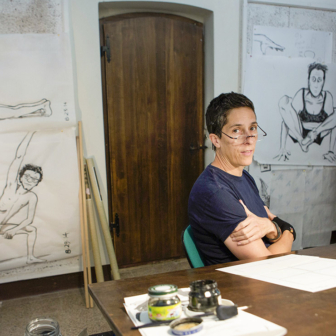Part of our collection of articles on Australian history’s missing women, in collaboration with the Australian Dictionary of Biography
Nell Malone was part of a generation of Australian women who existed on the periphery of history but whose influence lingers in the historical record. Her life was profoundly affected by both the world wars and one of the most infamous celebrity scandals of the early twentieth century. She was connected to noted Australian literary women of the period through Miles Franklin, though her own record was of service rather than authorship.
Helen Frances (Nell) Malone was born to Irish immigrants Mathew and Margaret Malone at a miners’ camp in Stannifer, on the Northern Tablelands of New South Wales, on 20 December 1881. One of ten children, she grew up at Fletcher Vale, near Charters Towers in Queensland, on a property her father had bought with his brother. In this environment, she developed a nonchalant approach to danger: in Childhood at Brindabella, Miles Franklin includes an anecdote from “a Queensland girl friend” who had “told [Franklin] that she was so fond of her carpet snake that when she found it coiled on a flourbag in its residential quarters she would stroke it in passing as one does a cat.”
Malone worked as a governess but became frustrated by the limited opportunities available for women in northern Queensland. She left for the United States in July 1914, armed with an inheritance of more than £1000 from her uncle and a letter of introduction to Miles Franklin from a mutual acquaintance.
On 4 September, as the first world war loomed over Europe, she called on Franklin at her Chicago office, bringing flowers. This was the beginning of a friendship that would endure over more than forty years. The bond between Malone, Franklin and a third friend, the Brisbane-born writer and illustrator Kathleen Ussher (also profiled in this collection), can be traced through Franklin’s archives and is described in Ross Davies’s Three Brilliant Careers (2015). With the war continuing, the three women reunited in London in late 1915.
For the Malone family, the trenches stretching across the Western Front had special significance. Two of Nell’s younger brothers, Edward (Ted) and John, would serve with the Australian Imperial Force as it fought its way across France and Belgium. After Ted was wounded at Messines on 7 June 1917, he and Nell were reunited at the 3rd Australian Auxiliary Hospital in Dartford, England. It was the first time the siblings had seen each other since Nell had left Charters Towers three years earlier. Ted was wounded again by gas at Villers-Bretonneux, but both brothers survived the war.
Possibly influenced by her brothers’ service on the Western Front, Nell volunteered as a hospital orderly with the Scottish Women’s Hospitals. Founded in 1914 by Dr Elsie Inglis as part of a broader suffrage effort, these frontline medical units were run and staffed entirely by women. Malone and Ussher served with the Girton and Newnham Unit in Salonika, the northern Greek town that had become an Allied centre on the Macedonian Front. There, according to an account published in 1916, women served variously as “women orderlies, sisters, chauffeuses, clerks, matrons, cooks, sanitary inspectors, and medical women.”
The Salonika camp — a double row of tents separated by a pathway known as “Regent Street” or the “Champs-Élysées” — occupied a flat stretch of ground near the sea. Although they mainly looked after French patients, the Scottish Women also assisted Serbian, Senegalese, Chinese, Montenegrin, Romanian and British casualties.
In 1915, an anonymous member described the scene for a pamphlet entitled The Call of Our Allies and the Response of the Scottish Women’s Hospitals for Foreign Service. Across the bay, she wrote, Mount Olympus was clearly visible, while the city itself “looked like a jewel set upon a hill.” Despite the difficult conditions in which the Scottish Women were expected to serve, she recalled that “the reds and blues of the horizon and the countless white minarets and the fine old city walls surrounding it make a charming view.” At the entrance to the camp, the Union Jack, the French Tricolour and the Red Cross flag were displayed.
Malone proved deeply devoted to service. Following the Armistice, she remained in the Balkans until at least 1922, providing humanitarian aid to Serbian orphanages before a period with the Serbian Relief Fund and then the American Educational Home for Serbian War Orphans.
After returning to London, she accepted a position as governess for Maud Linder, the daughter of Max Linder, an immensely popular French silent film star, and Ninette Peters, his young wife. Linder had been the highest-paid film star in the world in 1912, making a salary of over a million francs a week, but his depression and substance abuse was exacerbated by his wartime service. On 31 October 1925, in a hotel in Paris, he allegedly killed Ninette before taking his own life. (Although the inquest concluded it was a murder-suicide, Linder’s family claimed it was a double suicide.) Maud Linder was fifteen months old.
Malone moved with Maud to Colwyn Bay on the Welsh coast, living for several months under an assumed name while Ninette’s mother, Mathilde, and Max’s family pursued a high-profile custody battle. When Maud was sent to the Linder family home in Cavernes, Malone went with her, and she accompanied her again when the custody decision was reversed and Maud went to live with her maternal grandmother. By the time the second world war began, Nell, Maud and Mathilde were living near Versailles.
On the evening of 5 December 1940, during the coldest winter of the second world war, all women with British papers in Occupied France were rounded up. Malone was removed from the home she shared with Maud and Mathilde and sent to an internment camp at Caserne Vauban in Besançon, near the Swiss border. Sharing a room with up to forty British women — nurses, couturiers, dancers and nuns — she demonstrated the same strength she had shown at Salonika and while caring for Maud Linder. She appears briefly in Katherine Lack’s Frontstalag 142: The Internment Diary of an English Lady (2010). Lack’s great-aunt, Fanny Twemlow, recorded a short poem about Nell:
In Vauban
I first set my eyes on dear Helen Malone
She wheeled her wheelbarrow
Past drains wide and narrow
Singing work yet more work again and again.
After the war, Malone continued to work as a governess in Paris, but her life remained entwined with Maud Linder’s. She would reunite in Paris and London with her friends from the Scottish Women’s Hospitals, but never returned to Australia.
In 2012, Maud Linder opened a retrospective of her father’s life at the Louvre. She made special mention of the Australian governess who had remained with her throughout her turbulent childhood.
Nell Malone died in Paris in 1963 and was buried in Père Lachaise Cemetery, sharing a burial plot with Ninette Peters. In 2017, Maud Linder, the child she had so ardently protected, was buried there too. •
Further reading
Three Brilliant Careers, by Ross Davies, Boolarong Press, 2015
Her Brilliant Career: The Life of Stella Miles Franklin, by Jill Roe, HarperCollins, 2008
A History of the Scottish Women’s Hospitals, by Eva Shaw McLaren, Hodder and Stoughton, 1919




